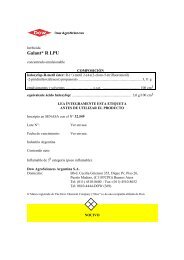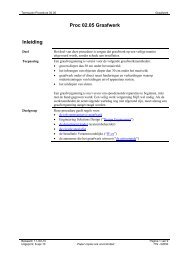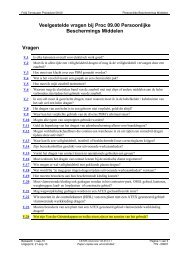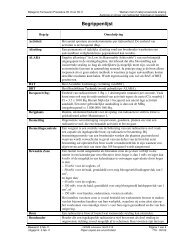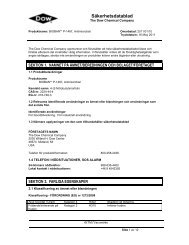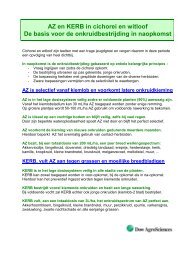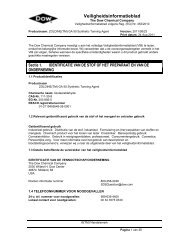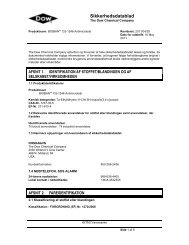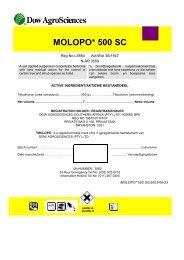Triethylene Glycol - The Dow Chemical Company
Triethylene Glycol - The Dow Chemical Company
Triethylene Glycol - The Dow Chemical Company
You also want an ePaper? Increase the reach of your titles
YUMPU automatically turns print PDFs into web optimized ePapers that Google loves.
Storage and<br />
Handling<br />
This information is offered as a guide in<br />
planning bulk storage facilities for glycols .<br />
<strong>Glycol</strong>s are generally considered to be stable,<br />
noncorrosive chemicals with high flash<br />
points . Under ordinary conditions, all of<br />
these chemicals can be stored in mild steel<br />
vessels . For long-term storage, or if trace<br />
iron contamination and the development of<br />
color are objectionable in any of the glycols,<br />
a storage vessel lined with a baked-phenolic<br />
resin, an air-drying epoxy-phenolic resin, or<br />
a vinyl resin or a stainless steel or aluminum<br />
tank is suggested . Zinc or galvanized iron<br />
is not recommended, and copper or copper<br />
alloys may cause product discoloration .<br />
It is not general practice to use an inert gas<br />
in the vapor space of glycol storage tanks,<br />
because all chemicals in this family have<br />
high boiling points and the vapors in the<br />
tanks are relatively nonflammable . However,<br />
if extremely low water content is required,<br />
consistent with a long storage period, a<br />
nitrogen blanket can be used to exclude<br />
atmospheric moisture and air . Blanketing<br />
with nitrogen will also minimize low-level<br />
oxidation, if necessary for the desired<br />
application . <strong>The</strong> inert gas prevents air<br />
oxidation in order to maintain product<br />
within acidity specifications . Increased<br />
acidity enhances iron pickup from steel<br />
vessels . Alternatively, a desiccant unit can<br />
be installed on the tank vent line to dry<br />
incoming air .<br />
If above-ground outside storage is planned,<br />
it may be necessary to install provisions for<br />
heating tanks and lines . Many glycols have a<br />
26<br />
moderately high freezing point or become<br />
relatively viscous at severe winter temperatures<br />
. However, excessive temperature can<br />
cause undesirable degradation of glycols .<br />
Automatic controls are suggested to limit the<br />
temperature of the contents to 120°F (49°C) .<br />
In cold climates, it is generally desirable<br />
to make provisions for draining the pump<br />
and the transfer lines if they are outside<br />
the building . If this is not feasible, it may<br />
be necessary to insulate and steam trace or<br />
otherwise heat the transfer lines to prevent<br />
freezing of the product . Care must be taken<br />
in such an application, because continued<br />
exposure of glycols to high temperatures,<br />
greater than 120°F (49°C), will result in<br />
product degradation . Transfer piping of<br />
mild steel is generally used .<br />
Shipping Data<br />
<strong>Triethylene</strong> glycol is not regulated by the U .S .<br />
Department of Transportation; therefore,<br />
it does not have a DOT Shipping Name,<br />
Hazard Classification, DOT Warning Label,<br />
or Identification Number .<br />
Shipping Data For <strong>Triethylene</strong> <strong>Glycol</strong><br />
Weight per Gallon at 20°C 9 36 lb<br />
Coefficient of Expansion at 55°C 0 00072<br />
Flash Point, Pensky-Martens Closed Cup 350°F<br />
Net Contents and Type of Container<br />
1-Gallon Tin Can 9 0 lb<br />
5-Gallon DOT 17E, Pail 47 lb<br />
55-Gallon DOT 17E, Drum 522 lb<br />
Storage and Handling




